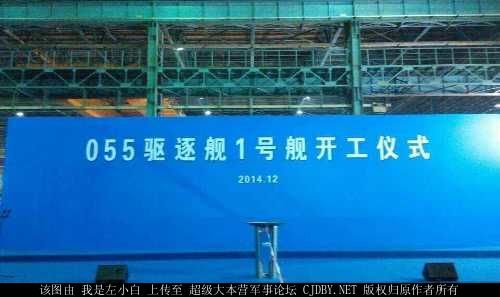That's exactly what my thought on this too - PLAN's requirement is not merely to come to parity with USN - US has military alliance with NATO, ANZAC (Australia & New Zealand), Japan, South Korea, and they are now working to get India and ASEAN nations into the fold too. China will have to be able to defeat the alliance of ALL OF THEM COMBINED! Or else, it will just be history repeating itself - Eight-Nation Alliance ("八國聯軍") where China came up short.
42 major combatants for PLAN is simply not enough. USN is said to be "pivoting east" with 60% of the total forces which means if there are currently about 84 Burkes & Ticos in total, that's about 50 in the pacific; adding in JMSDF's 10 modern Burke class destroyers (Atago, Kongō, Akizuki), 6 from ROKN (Sejong the Great-class), 3 from RAN (Hobart-class) and 3 from IN (Kolkata-class), and that's 106 highly advanced major combatants that China will have to deal with; and I havn't even count the rest of ASEAN or NATO.
The only course of action for China right now would be to pursue asymmetrical means as much as possible. ASBMs would even the number a little (how effective they are, are largely unknown) but they would be quite cost effective as it is far cheaper to mass produce ASBMs than to build major surface combatants like the 055 DDG. Let's assume 055 DDG's price tag is 60% (things being cheaper in China) of the Burke which is $1.84 billion USD - that means 055 DDG would roughly cost $1.1 billion USD per ship. To bring up to parity with only USN would cost $84 billion for the major surface combatant alone - that's more than half of the current PLA budget. On the other hand, an ASBM would cost far less - if we take the cost of Trident D4 (that's the closest in capability with known cost published - if anyone know the cost of DF-25D I am all ears)'s cost of $37 million per missile as baseline - you can have almost 30 ASBMs for the cost of every 055 DDG (with the assumed guesstimate cost of $1.1 billion). If you factor in cheaper manufacturing cost in China (again, rough guesstimate) of 60% of comparable cost base in US - then PLAN can get 50 ASBM for every 055 DDG. A barrage of 50 ASBMs combine with even large number of far cheaper long range subsonic ASMs would be far more cost effective to PLAN to pursue IMO.
I think the real strategy would be the mix of the two - bolster a credible high tech naval force with large number of ASMs and ASBMs.
To try and match the military might of the US and allies combined would be to fall for the same trick that did the soviets in.
Hell, not even America can afford America's defence expenditure.
China's goal is not to be able to match, never mind defeat the US military. Rather, China's goal is maintain enough military might to be able to hold off an attack by America and allies.
The minimal requirement is to be able to deny America a quick, knock-out blow and force it into a long, bloody and costly drawn out war of attrition and break its people's will to continue fighting. Preferably without too much damage to China's industrial and economic centres.
The ideal solution is to not have to fight at all. China will keep growing its economy as a priority while systematically developing its military. By the time China's economy is bigger than America's, it will be able to outspend America without putting undue strains and drains on its economy by maintaining current levels of military expenditure as a percentage of GDP.
Failing that, if a fight is unavoidable, China would aim to deliver a knock-out blow of its own, to damage the US military so much so that it is unable to effectively continue offensive operations against China. Add to that the huge domestic pressure on the US from such military reversals, especially if the conflict was over fringe issues that most Americans couldn't care less about. There is a reasonable chance America might accept a climb down if China was mature enough to give them a face saving way out.
Asymmetric systems like ASBMs are aimed to deliver the knock-out blow.
Conventional assets like the Type55 are meant to further China's industrial military industry so that when the Chinese economy does match and surpass that of the US, it has top quality kit to buy.
In essence, the Type 55 represents China's future, of where China wants to be in 10-15 years time. The DF21 ASBM and others are the insurance policy in case conflict cannot be avoided and comes at a time before China's long term plans have come to fruition.
As such, it would be unwise to overspend on insurance at the expense of investments towards the ultimate goal.


